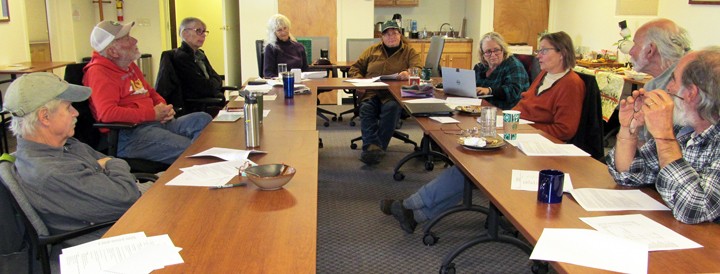Council renews Village at Wolf Creek fight

ALAMOSA — During their annual meeting in Alamosa on Wednesday San Luis Valley Ecosystem Council board members renewed their commitment to oppose the Village at Wolf Creek.
The board voted to move ahead with a legal challenge against the Rio Grande National Forest’s latest record of decision granting access to the proposed development near the Wolf Creek Ski Area.
In July Forest Supervisor Dan Dallas released a new draft record of decision that would provide access by means of a new road to the landlocked 288-acre parcel of land owned by Leavell-McCombs Joint Venture where the proposed Village at Wolf Creek would be developed.
The recent decision is an alternative to an earlier land exchange that would have provided direct access to the Village from Highway 160. Senior Federal Judge Richard Matsch ruled against the land exchange last year, and an appellate court earlier this month dismissed the developers’ appeal of that decision based on jurisdiction.
The road alternative uses The Alaska National Interest Lands Conservation Act (ANILCA) as precedent authority for providing access, something the Ecosystem Council questions as valid in the “lower 48.”
“This may be the precedent case whether ANILCA is going to be applied in the lower 48 states,” Ecosystem Council Director Christine Canaly told the Ecosystem Council board.
She said ANILCA arose when President Jimmy Carter designated an enormous area of Alaska as public lands, primarily a national monument. There were private lands and activities such as mining already going on within that area now surrounded by public land, so ANILCA was passed to allow those private inholdings access.
“It’s really a different situation than what we are doing,” Canaly said. “They are taking that logic and trying to apply it to this situation. I don’t think it’s the same.”
She urged the board to move ahead with a legal challenge to the latest record of decision, “basically giving the developers access and using ANILCA as the reason to do that.”
“We have to move forward. We have to see what’s going to happen.”
She added, “I think some really good decisions have come because we have been willing to challenge this. I would make that recommendation to the board.”
Canaly said this alternative was part of the environmental impact statement (EIS) but was not the Forest’s preferred alternative. The preferred alternative was the land exchange of about 205 acres of National Forest System land for 177 acres of land owned by the Village developer to create a parcel that would have direct access off Highway 160.
The objection process for the latest record of decision based on ANILCA restricts objections to those who previously submitted written comments regarding the proposed project during scoping (2011) or comments on the draft EIS (2012). Issues must be based on previously submitted comments regarding the project.
Canaly and members of the Ecosystem Council board said they did not believe it was fair to limit objections to those who commented in 2012.
“I feel that’s totally unjustified,” Canaly said, “because so much has happened since 2012 — fires, beetle kill …”
Ecosystem Council Board President Dr. Beth Kinney said people have also changed during that time, with folks moving in and out, and they should have the opportunity to have their voices heard.
Council board member Don Thompson was one of several potential objectors (including fellow Ecosystem Council board members) receiving a response that because he did not participate in 2012 he could not do so now. He said he couldn’t believe he hadn’t participated in 2012.
Canaly said the fact that the majority of the Ecosystem Council’s board members were rejected as objectors was a point that needed to be made during arguments.
“Basically that’s what’s being said, you have no legal standing,” she said.
She said she would try to find the comments from 2012 to see who had participated then.
Canaly said in her experience with agencies, “they are usually being encouraged to narrow the focus with any decision they make. Unfortunately what that does is creates a silo mindset … not wanting to take in any more of what could be relevant information.”
She added that she believed agencies would change in the next 20 years, but right now “we are dealing with the narrow mindset.” She added the Forest Service “does not want to take responsibility for that development or that potential plat. They want to delegate that to Mineral County, who does not have the resources to do any analysis.”
Canaly said this project “highlights everything that’s right and wrong with the process.”



